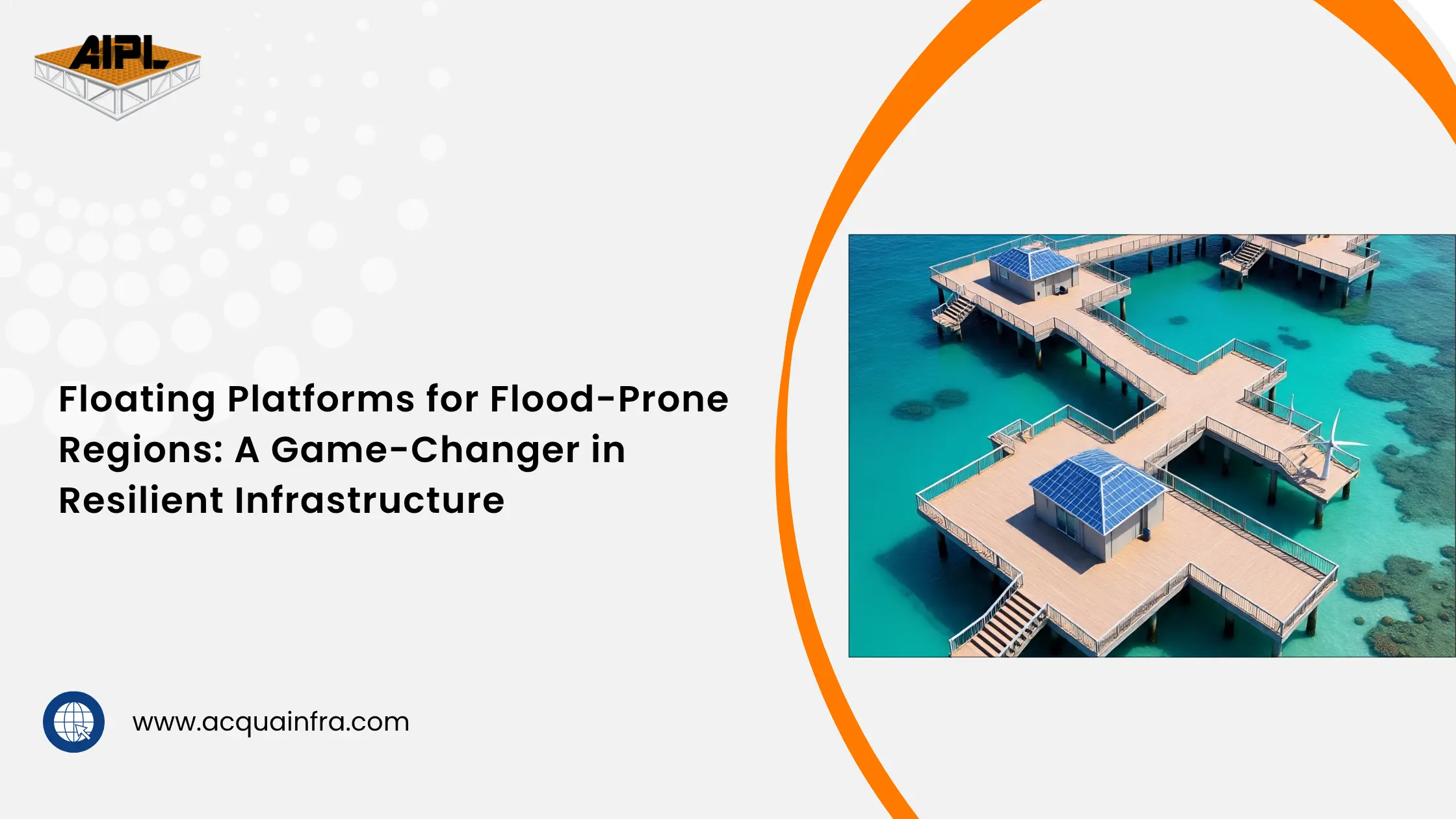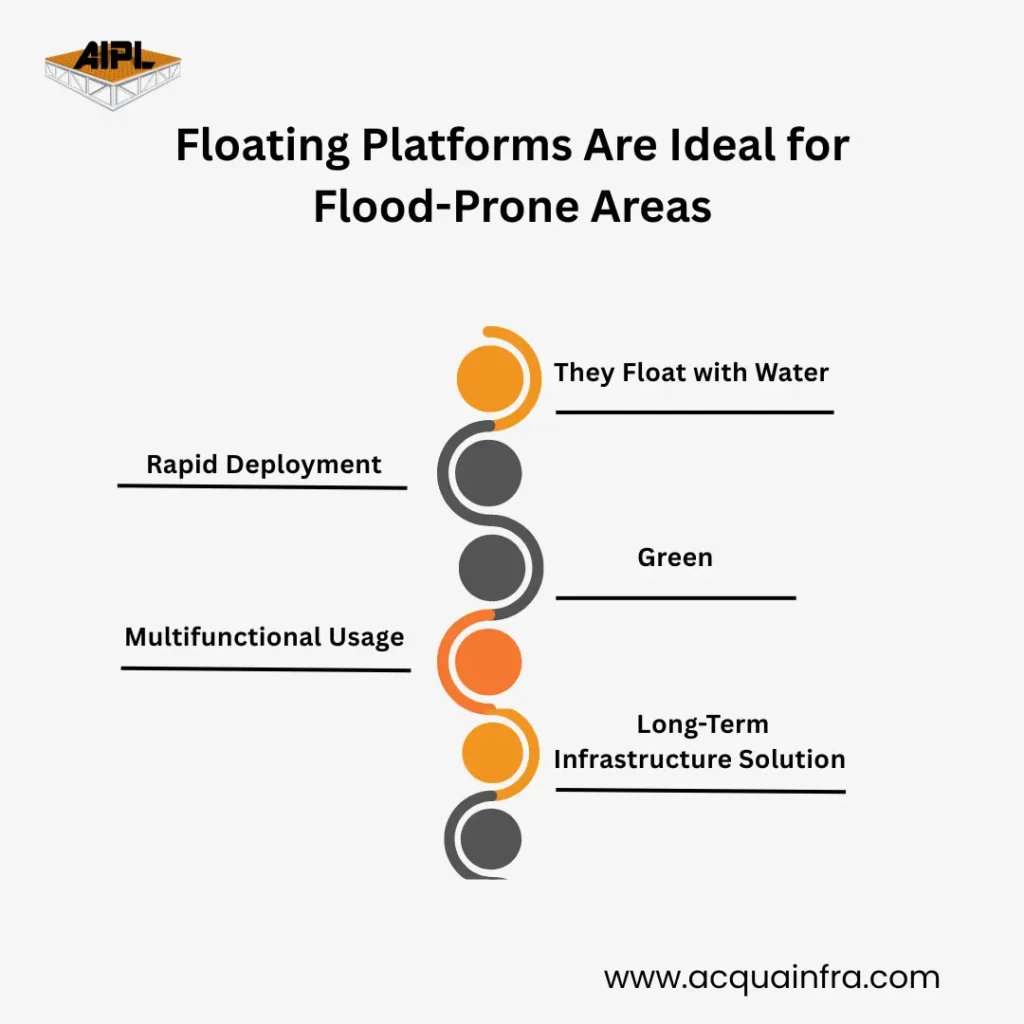
Floods are no longer unusual; they are seasonal, often monthly, and always expensive. As a digital marketer of pioneering infrastructure brands, I've witnessed how floating platforms are silently redefining survival in flood-risk zones—not as rescue interventions, but as daily infrastructure.
No matter whether it's housing, sanitation, or water pumping, the answer doesn't always reside on land—sometimes it floats.
Climate change has resulted in uncertain weather conditions and increased monsoons. Urbanization and deforestation have broken up natural water absorption. Aging infrastructure in most regions can't cope with today's rainfall or runoff.
The World Bank reports that more than 1.5 billion people reside in flood-risk areas—and that figure is growing.
Why Floating Platforms Are Ideal for Flood-Prone Areas

1. They Float with Water
Unlike permanent structures, floating platforms adapt to water levels to avoid submergence or collapse.
2. Rapid Deployment
For emergency shelters or medical facilities, water pumps, or other purposes, these platforms are modular and portable, providing speedy setup in emergencies.
3. Green
Constructed from buoyant and corrosion-resistant materials such as Mild steel, HDPE or aluminum, floating platforms do not disrupt ecosystems or need massive land excavation.
4. Multifunctional Usage
They can accommodate:
Floating houses
Emergency medical or rescue facilities
Solar-powered water treatment
Floating pump systems
5. Long-Term Infrastructure Solution
Not limited to emergencies—these systems can be left in position for months or even years, offering stable solutions in perpetually impacted areas.
Bangladesh: Floating schools and libraries keep education continuous throughout the year in floodplains.
India (Assam, Kerala): Floating bridges and pump pontoons used during monsoon flooding.
Netherlands: Floating neighborhoods constructed as permanent solutions to sea level rise.
Personal Insight: I discovered while doing research on this project a floating village in Cambodia that has homes, schools, and markets adjust with the water. It's not only practical—it's optimistic.
AIPL (Advanced Infrastructure Projects Ltd.) invented floating pump pontoons tailored to meet one of the most urgent issues during floods: the availability of clean, flowing water.
Stability under fluctuating water levels
Long-lasting, anti-corrosive construction materials
Rapid, site-assembled assembly
Low maintenance
Industrial, agricultural, and municipal custom sizes
Industry Tip: Submerged fixed pump stations perish. AIPL's pontoons ride above peril, providing continuous water supply even with loss of ground-level access.
Floating platforms support multiple UN Sustainable Development Goals (SDGs):
An inflatable, module-based building built to float structures like buildings, pumps, or utilities above water, best suited in aquatic or flood-prone areas.
Yes. With a good design and anchoring, they can last for decades as homes, pump stations, or public facilities.
It floats and stabilizes a water pump, enabling water to be pumped efficiently even at fluctuating levels of water or during floods.
Although they are more expensive than conventional structures to implement initially, the cost savings on maintenance, disaster relief, and adaptability in the long term make them inexpensive.
If you’re planning infrastructure in flood-prone areas, don’t wait for disaster. Start building resiliently—with floating solutions.
👉 Let's Connect! Reach out for consultations, collaborations, or customized floating solutions for your next big idea.